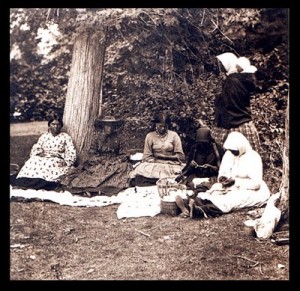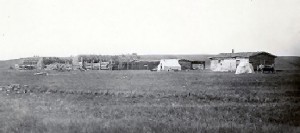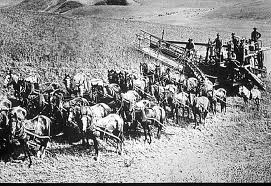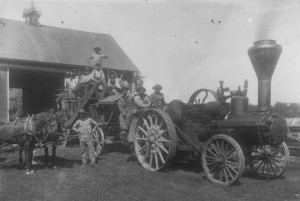Native Americans generally ate a healthy, varied diet when they were free to do so. Foods included wild berries, fishes of all kinds, pigeons and ducks, bread made from nutritious wild grasses like pigweed and dropseed, and sweeteners from agave and maple syrup. Native Americans drank sassafras tea and broth thickened with corn silks, along with many other soups and drinks. Many explorers were impressed by the physical development of Native Americans and saw much to admire in their athleticism and endurance. Continue reading
Tag Archives: Crow
Finer Things
When explorers and settlers first came to the New World, they brought beads with them. These items were small, lightweight, and (hopefully) useful trading goods. Native Americans had used beads before contact with whites, but they valued the new, unusual beads that the Europeans brought. Glass beads, usually made in Venice, Italy, were something Native Americans could not manufacture on their own, and were highly valued. Early trade beads were large, but eventually, tiny “seed” beads were introduced, and Native Americans used them on buckskin and cloth.
Different tribes developed different preferences for bead colors and ornamentation styles. Sioux Indians preferred chalk white or blue background colors, and various shades of blues and greens for design.The Crow liked blue and a color called Cheyenne Pink for their backgrounds, with red, dark blue, yellow, green, and sometimes purple design colors. Native American women invented two methods of using beads: loom beading and applique embroidery. For looms, they fastened birch bark with holes in it over bow-shaped branches and threaded rows of beads through the holes. Women created distinctive patterns from chains of beads in rows and columns; these patterns became associated with different groups so that an Indian man could be identified from a distance based on the bead color and pattern of his clothing.
______________________________________________________________________________________
Land Benefits
When farmers began to look at the benefits of mechanization in the early part of the 20th century, most realized that any real labor and cost savings would have to take place on large farms. Thomas Campbell believed wholeheartedly in the benefits of large-scale, mechanized farming, and wanted to prove it. During WWI, he wanted to sow huge quantities of wheat on land that Indians weren’t using.
Campbell wrote to various government officials without much success, but finally convinced President Woodrow Wilson that the country could benefit from his idea. Frank Thackery, a supervisor in the Indian Office, met Campbell and showed him around various reservations. Thackery suggested Campbell farm about 200,000 acres, about ten times what Campbell had originally envisioned. The Commissioner of Indian Affairs approved leases on Crow, Blackfeet, and Fort Peck reservations.
Campbell did not have to pay taxes or interest on this land, since the land was federally owned. Thackery wanted Campbell to pay Indians in grain, as a share of the crop, but many Indians preferred money. Campbell paid them 50 cents an acre for the first two years of the lease, then 75 cents an acre the third year, and finally a dollar an acre in the fifth year. He also bought land off Indians for $3 – $4 an acre. No one made much money, including Campbell, but he would have undoubtedly failed immediately without his favorable leases on reservation property.
______________________________________________________________________________________






